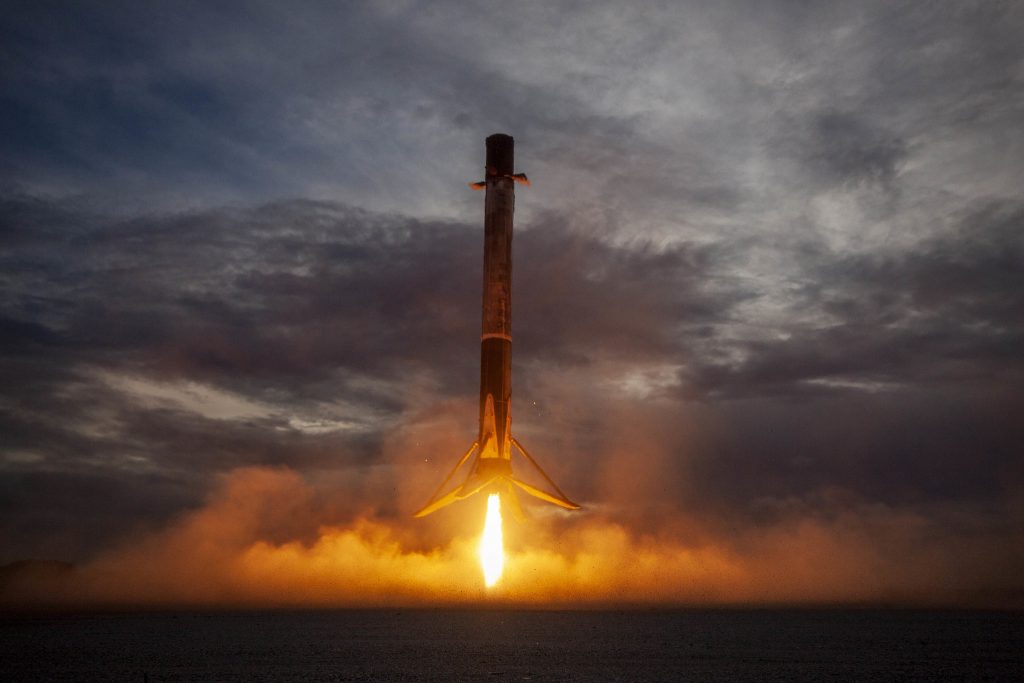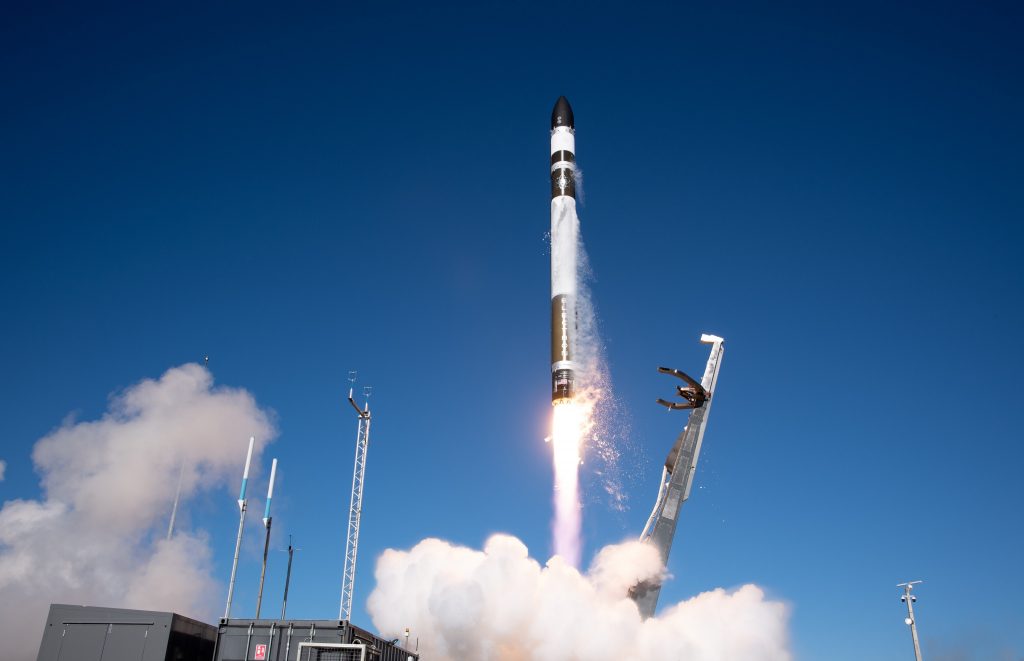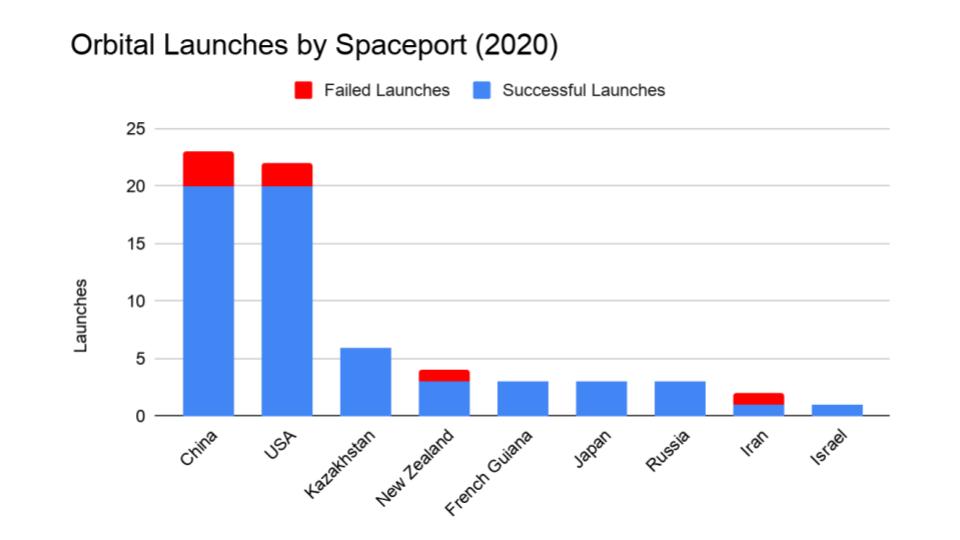Media
Transcript
First up, on Sunday, August 30 at 23:18 UTC, SpaceX launched a Falcon 9 carrying three satellites to a polar orbit from Cape Canaveral — this is the first East coast polar orbit launch for SpaceX.

The main passenger for this flight was Argentina’s SAOCOM 1B with rideshare payloads Tyvak-1072 and GNOMES-1.
The Earth observation satellite SAOCOM 1B weighs in at about 1600 kilograms. It’s the second in a two-satellite constellation; the first was also launched into space aboard a Falcon 9 rocket back in October of 2018. Developed by Argentina’s space agency CONAE, it will image the Earth’s surface using an L-band synthetic aperture radar, allowing detailed images to be taken day or night and in all weather conditions.
Not much is known about Tyvak-1072 except that it was built by, well, Tyvak. It’s definitely a microsatellite, as that’s what the company specializes in.
GNOMES-1, or GNSS Navigation and Occultation Measurement Satellite, is owned by PlanetiQ. It’s the first of a planned twenty-satellite constellation that, according to the company, will collect radio occultation data for weather forecasting, climate research, and space weather monitoring. What that means is that the satellites will measure signal strength coming from global navigation system satellites.
Even though all of these satellites are in space, their signals can still be partially blocked by the atmosphere. GNOMES-1 will literally measure how much the atmosphere is blocking the signals. This is most effective when the signals received from satellites are at a low look angle and have passed through the bulk of the atmosphere. Changes in the signal strength can indicate cloud and storm formation. The biggest change between the newer GNOMES constellation and older radio occult weather satellites is that the newer satellites are capable of receiving signals from the US’s GPS, Russia’s GLONASS, Europe’s Galileo, and China’s Beidou global navigation satellite systems (or GNSS).
The launch of SAOCOM 1B and company itself was significant in terms of the track that it followed. Since the payloads were destined for Sun-synchronous orbit (SSO) that meant the rocket needed to turn due south from the launch site, taking it over Cuba among other places. This is the first time this has been done from the Cape since a launch in 1960 caused debris to land on the island nation, killing a cow in the process, and prompting protests in front of the US Embassy there.
The FAA and range safety officials approved this launch profile for SpaceX for two reasons: first, the Falcon 9 uses an automatic flight termination system that can activate without outside radio signals in case of an emergency. This is useful since ground-based signals would have to be received through the rocket trail left behind during the launch. Second, since the first stage was able to land back at the launch site, there was no debris that was likely to fall on places downrange in the first place.
For those of you keeping score at home: this was the fourth flight for this first stage. In a press release, SpaceX shared that it had “previously launched Dragon to the International Space Station for SpaceX’s 19th and 20th commercial resupply missions, and it also supported the launch of SpaceX’s ninth Starlink mission.”
As far as the fairings go, no catch was planned but Ms. Chief did successfully retrieve both fairing halves from the ocean.
Next up, Rocket Lab’s fourteenth Electron launch, “I Can’t Believe It’s Not Optical”, launched on Monday, August 31, 2020, at 03:05 (UTC).

Its payload was the Capella Sequoia, an Earth observation satellite that utilizes synthetic aperture radar. According to Rocket Lab’s press release and mission overview, the satellite can provide “high-quality images of the Earth day or night, and in any weather conditions….providing insights and data that can be used for security, agricultural, and infrastructure monitoring, as well as disaster response and recovery.”
Sequoia is the first in a planned constellation.
A couple of the satellites I’ve mentioned use synthetic aperture radar (SAR) sensors rather than optical sensors. Unlike conventional optical sensors that use ambient light, such as the little camera in your smartphone, synthetic aperture radar emits radio pulses to “illuminate” a target scene and an antenna that is moving (because the spacecraft that it’s attached to is moving) records the time it takes the radar pulses to return. It’s the change in position of the antenna that creates a large synthetic antenna aperture — effectively creating a much larger antenna than the size of the physical receiver. The larger the aperture, the higher the image resolution will be. These systems aren’t affected by things like fog, clouds, or darkness, which can significantly increase the amount of time they can image.
The collected data can be used to create two-dimensional images and three-dimensional reconstructions of objects, such as landscapes. In many ways, SAR and side-scan sonar systems are very similar in that both systems emit the energy used to image the target of interest. A few applications of the technology include sea ice monitoring in the north, disaster response, environmental monitoring for things such as leaking ships and oil wells, topographic mapping, and the tracking of ships.
To wrap things up, here’s a running tally of a few spaceflight statistics for the current year:
Toilets currently in space: 3
Toilets burned up: 2
Total satellites humans put into orbit: 695 (includes those launched from other in-orbit craft, such as the ISS)
Total satellites from launches: 679
(Total Starlink satellites: 533)
Total 2020 launch attempts: 67 (including 7 failures)
I keep track of orbital launches by where they launched from, also known as spaceport. Here’s that breakdown:

China: 23
USA: 22
Kazakhstan: 6
New Zealand: 4
French Guiana: 3
Japan: 3
Russia: 3
Iran: 2
Israel: 1
Your space fact for the week comes from Keeper of Maps: Maple syrup cookies were one of the official food items sent up to the ISS for Chris Hadfield by the Canadian Space Agency. And, yes, he shared them with the other astronauts.
Learn More
SpaceX launches first polar orbit mission from Florida in decades
- SpaceX mission update
- CONAE press release
- Spaceflight Now article
- SAOCOM info page (Gunter’s Space Page)
- GNOMES info page (GSP)
Rocket Lab returns to service with successful launch for Capella
Credits
Host: Annie Wilson
Writers: Dave Ballard, Gordon Dewis, Ally Pelphrey, and Annie Wilson
Audio and Video Editing: Ally Pelphrey
Content Editing by Beth Johnson
Executive Producer: Pamela Gay
Intro and Outro music by Kevin MacLeod, https://incompetech.com/music/


 We record most shows live, on Twitch. Follow us today to get alerts when we go live.
We record most shows live, on Twitch. Follow us today to get alerts when we go live.